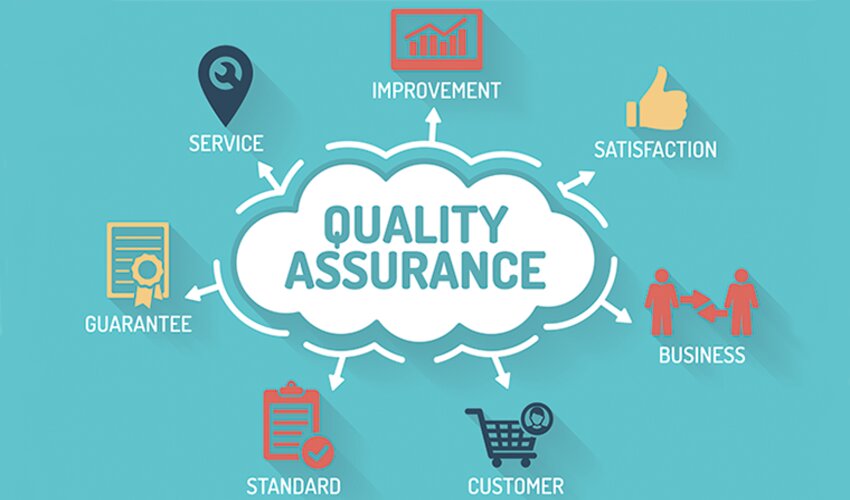As the world of software development continues to evolve and improve, it is essential to mention the importance of quality assurance. Software as a Service utilizes quality assurance in the biggest way. The SaaS model is here to stay and has changed how users view digital products. Therefore, quality assurance in software as a Service goes beyond eliminating bugs that cause glitches. It must scale to meet performance standards to make it easy to complete processes and get products into the hands of the consumers. QA is critical to attaining SaaS success, impacting customer satisfaction, product reliability, and improving brand reputation. Let us take a closer look at quality assurance in SaaS and how it drives success.
What is Quality Assurance in SaaS?
In Software as a Service, quality assurance confirms that software meets specific performance, features, and user experience standards. The method involves software testing, validation, and verification. Through these processes, a developer can spot and fix errors, boost performance, and ensure the software product aligns with user needs and expectations.
Developing high-quality software is vital for success and essential in attaining a competitive edge in the fast-paced competitive market and retaining customers. Quality assurance in software development is critical to fix errors, confirming that the program meets the envisioned criteria and provides a smooth user experience.
Reasons behind QA for SaaS Success?
QA is integral in software development to help investigate and fix errors and remove bugs, inconveniences, or any other redundancy. It helps ensure the products hit the mark of the market requirement and can deliver optimal performance. So, quality assurance is critical in the SaaS development life cycle for the following reasons.
Improved User Experience
Nobody likes glitches and lags when using a mobile app or website. It is annoying and gives the worst experience. Today, software developers must pay attention to UX while developing and testing SaaS products.
Optimized software allows you to increase your customer base due to improved scalability and accessibility with the end user in mind. So, if you integrate customized SaaS PR solutions for your business, you are bound to get proper feedback from the public which enables you to keep proper communication, and deliver exactly what your end user requires. In turn your company’s image is boosted since you understand what the market needs. QA in turn minimizes downtime while giving users a positive experience.
Improved Security
SaaS products contain sensitive data, and security is a crucial factor consumers look for in software. A single data leak can cost the business a lot. Therefore, QA testing is essential to test for safety and performance. It also helps look at strategies and protocols that secure the product from intruders and hackers.
Protecting Brand Reputation
A minor bug or glitch can ruin the reputation of the SaaS brand, and there is a high chance that users will lose trust in the product and the entire brand. QA plays a vital role in SaaS success by ensuring the product does not have errors and meets user expectations. This maintains a good reputation for the brand and ensures users have a positive experience with the product.
Saving Time and Capital
Think of a situation when a product is launched to the market without going through the quality assurance process. If the product has technical glitches, it ruins the user experience, forcing it to shut down to remove the errors. This takes precious time, not to mention capital loss. That means the product also loses its competitive advantage once it is re-launched. However, ensuring QA during the development stage reduces time to market. It puts the product on a successful edge once launched into the market. The process may seem slow, but it saves time in the long run by catching defects early and preventing expensive fixes.
Best Practices for Quality Assurance in SaaS
There are several practices for QA to help ensure software success. They include:
Systematic and Regular Testing
QA should never be a second thought in software development. It is a process that must be established systematically from the start to the end of the development process. It helps detect defects during the early stages and correct them.
Automation
Process automation in QA can help identify and correct errors quickly. This saves time and hassle in the development lifecycle after releasing the product to the market. Tools like automatic reporting of bugs allow clients to report a bug with all the information. Automation eliminates the monotony of repeating tasks, speeds up processes, and eliminates human error.
Continuous Improvement of Quality Control Processes
The quality control process should be ongoing and updated to ensure products meet customer expectations every time. Continuous improvement allows QA to adapt to changing technologies and user demands.
Performance Testing
When choosing SaaS products, customers look at loading speed, navigability, integration, and scalability. Therefore, it is crucial to conduct performance testing to ensure the product fulfills these needs without crashing.
Usability Testing
In addition to testing performance, usability testing is another vital practice for effective QA in SaaS. Usability testing gives insights into how the product performs in real-world situations.
Key Takeaways
Quality assurance is a critical step in software development as it helps ensure the product meets the set quality standards before it is released to the market. Note that QA covers more than bug detection. It is implemented throughout the development phase to ensure the product offers an excellent user experience and performs well. Therefore, QA is not a consideration during software development but is necessary to achieve SaaS success.

Aimee Garcia is a Marketing Consultant and Technical Writer at DailyTechTime. She has 5+ years of experience in Digital Marketing. She has worked with different IT companies.



